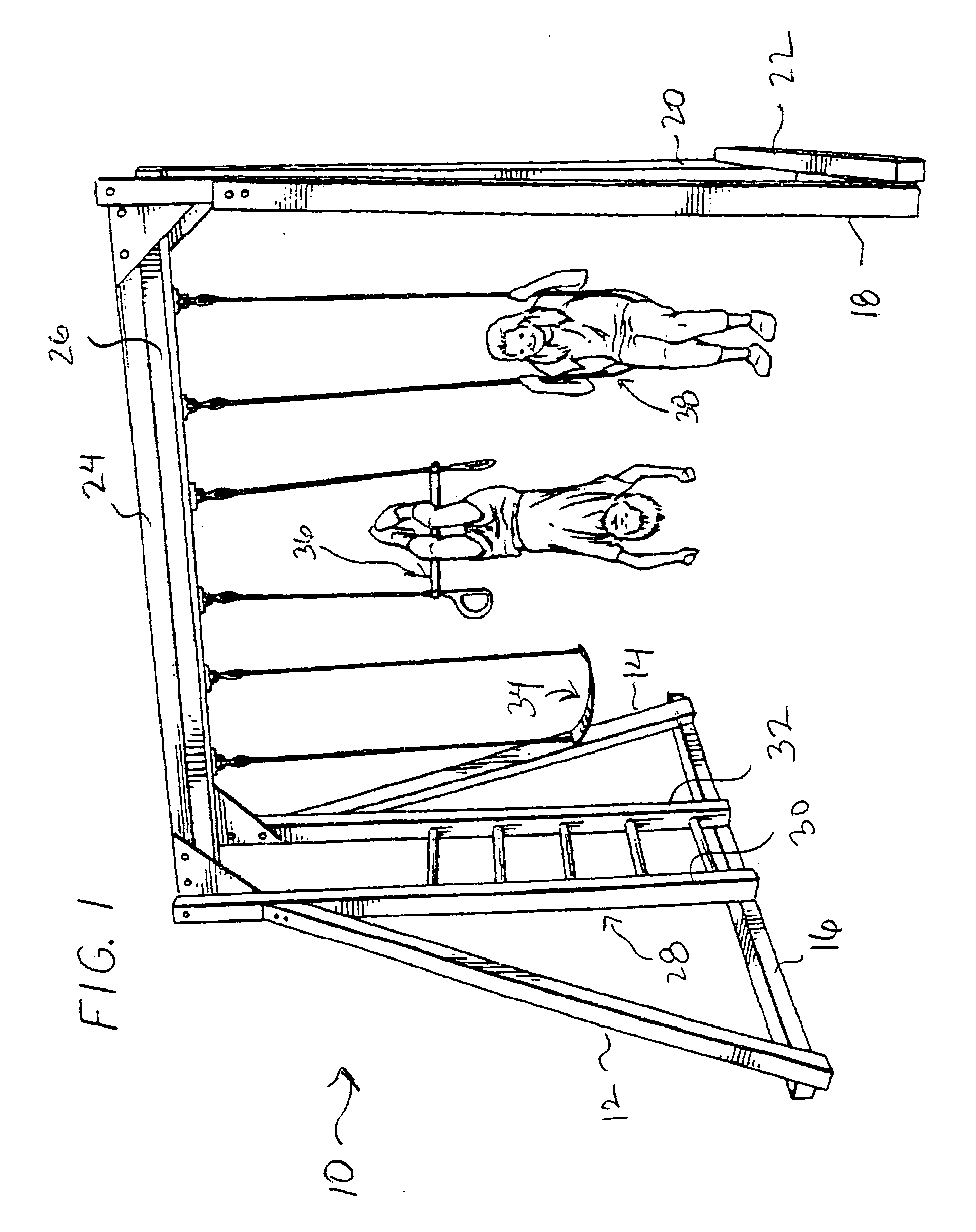Method and apparatus for protecting a substrate
a substrate and protection technology, applied in the direction of girders, manufacturing tools, joists, etc., can solve the problems of premature wear and failure of even properly designed structures, structural materials may also be damaged or subject to deterioration, and fasteners to rust or corrode, and achieve uniform cross-section
- Summary
- Abstract
- Description
- Claims
- Application Information
AI Technical Summary
Benefits of technology
Problems solved by technology
Method used
Image
Examples
Embodiment Construction
[0030]Referring now to the drawings wherein like numerals designate like and corresponding parts throughout the several views, FIG. 1 shows a perspective view of a playground set 10 incorporating a plurality of encapsulated members 12, 14, 16, 18, 20, 22, 24, 26, 30, 32 (hereinafter referred to as encapsulated member 12) for either supporting the overall structure, or providing additional support for a substructure such as ladder 28 having side rails 30, 32, or swings 34, 36, 38, each encapsulated member 12 being assembled and encapsulated according to the present invention.
[0031]Referring now to FIGS. 2 and 3, each exemplary encapsulated member 12 includes a wooden substrate 11 having a terminus 13 to which the inventive end cap 40 of the present invention has been installed, and subsequently encapsulated in a jacket of polymeric material 42 that has been applied to and about the end cap 40 and a contiguous portion of the structural member 11 adjacent to the terminus of the substra...
PUM
| Property | Measurement | Unit |
|---|---|---|
| thickness | aaaaa | aaaaa |
| length | aaaaa | aaaaa |
| humidity | aaaaa | aaaaa |
Abstract
Description
Claims
Application Information
 Login to View More
Login to View More - R&D
- Intellectual Property
- Life Sciences
- Materials
- Tech Scout
- Unparalleled Data Quality
- Higher Quality Content
- 60% Fewer Hallucinations
Browse by: Latest US Patents, China's latest patents, Technical Efficacy Thesaurus, Application Domain, Technology Topic, Popular Technical Reports.
© 2025 PatSnap. All rights reserved.Legal|Privacy policy|Modern Slavery Act Transparency Statement|Sitemap|About US| Contact US: help@patsnap.com



